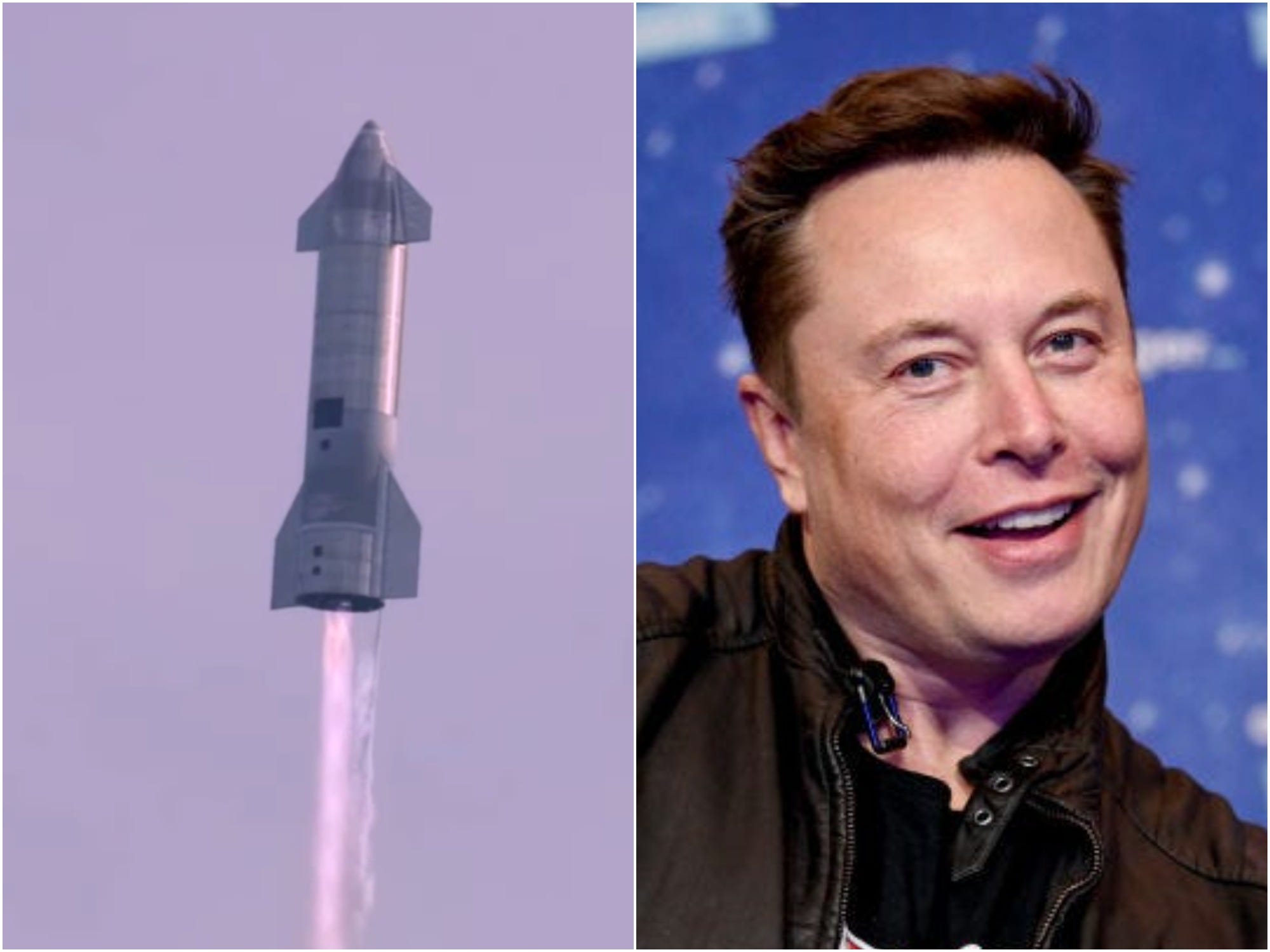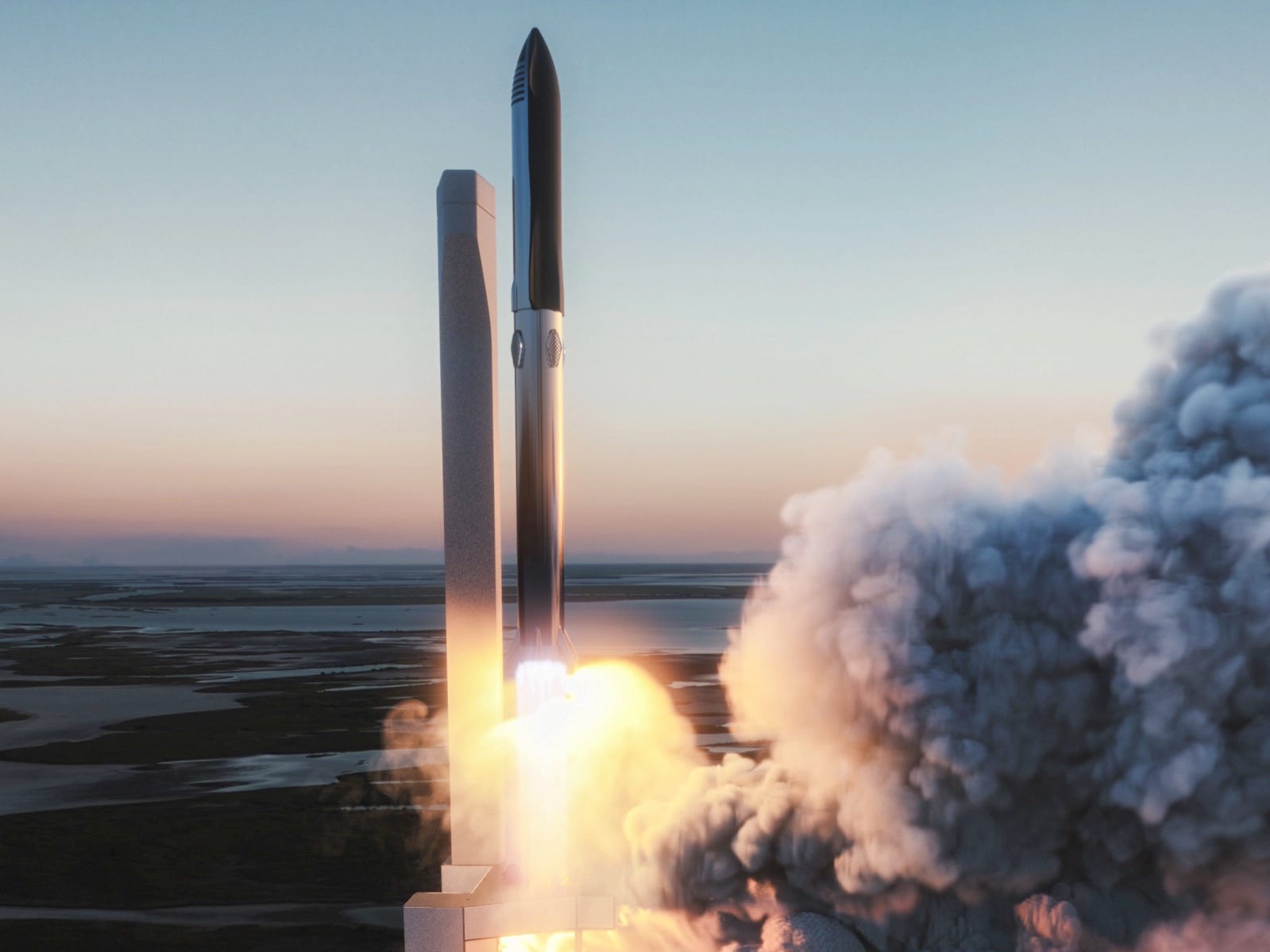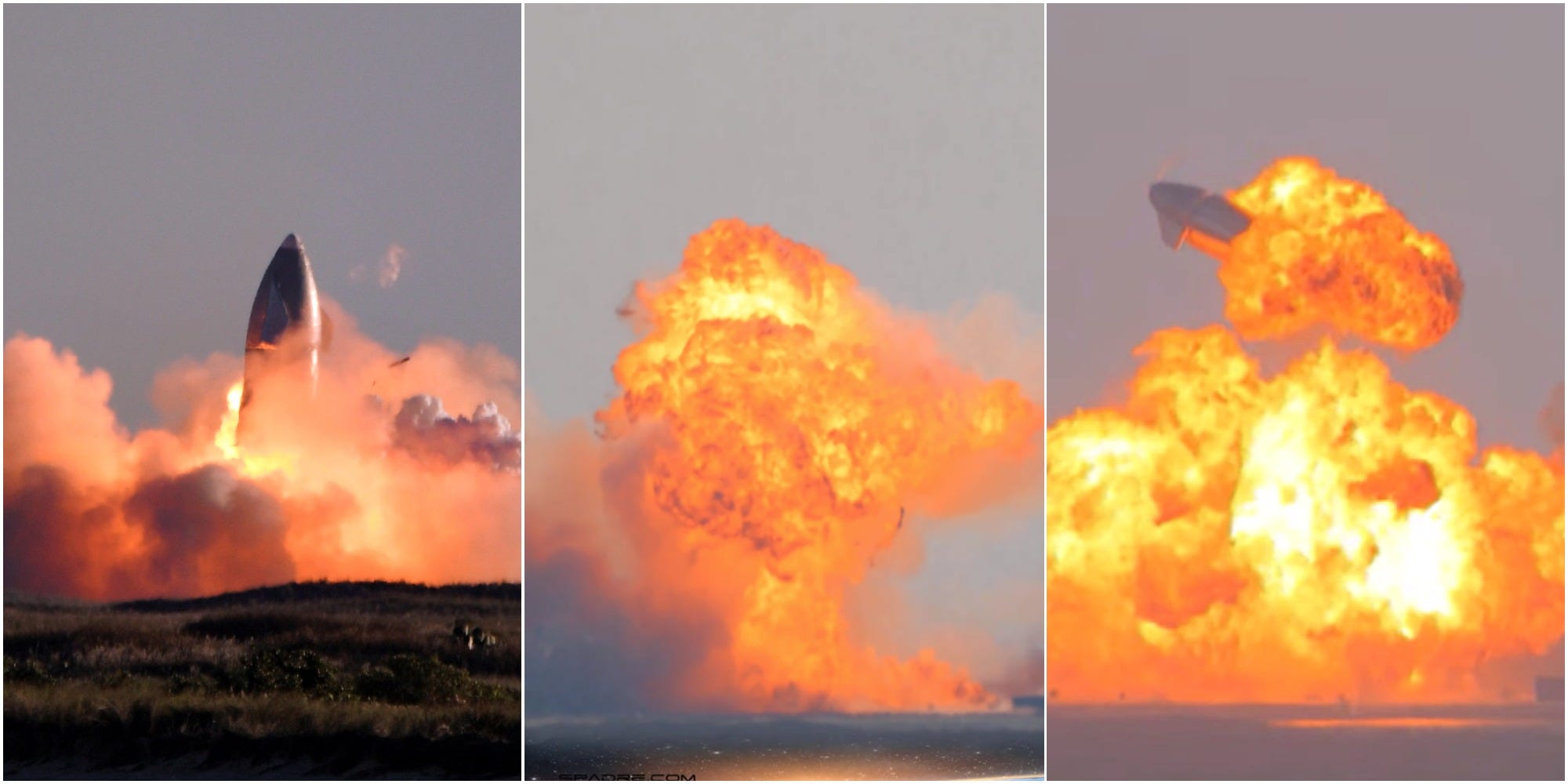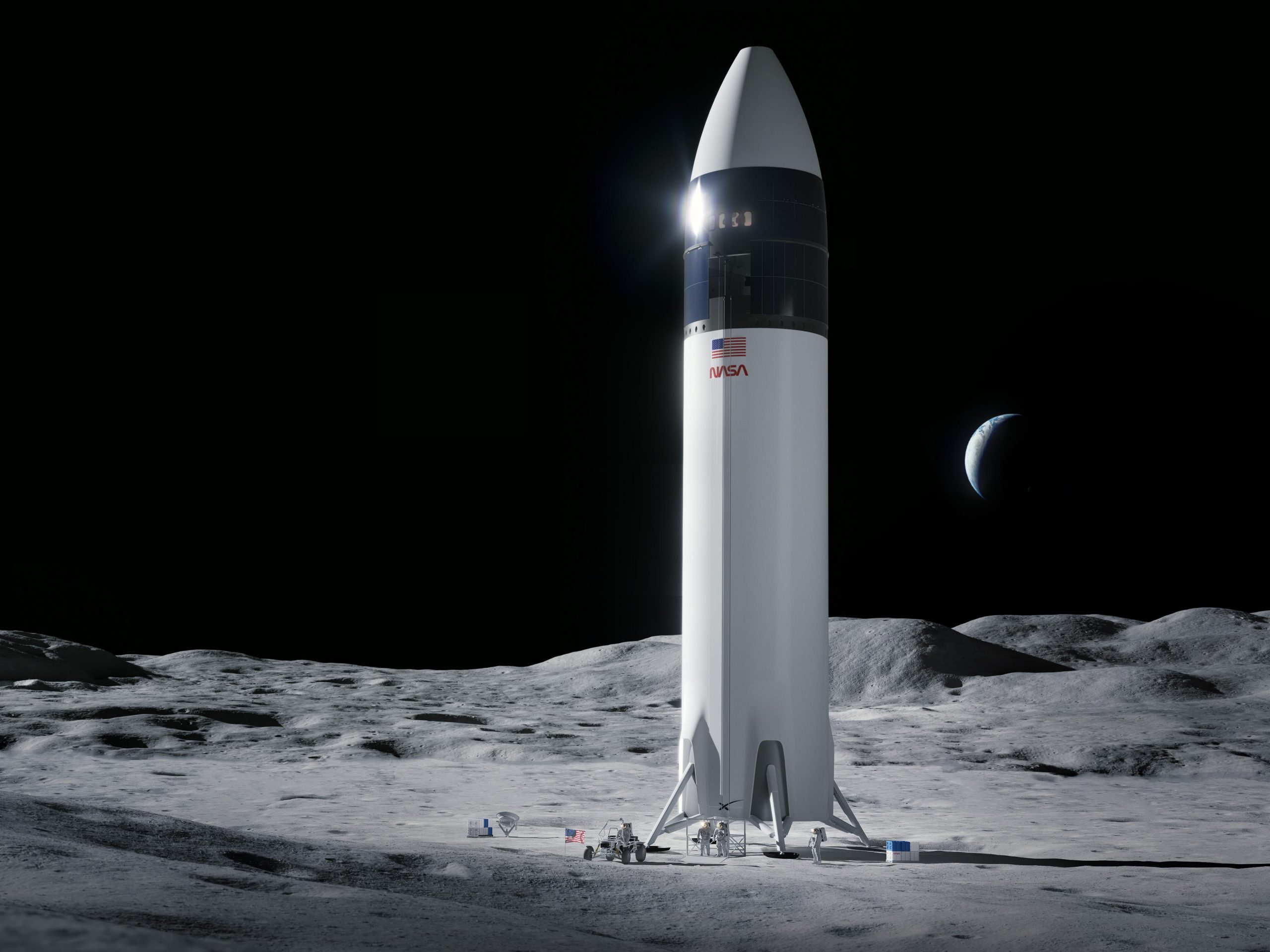
SpaceX; Britta Pedersen-Pool/Getty Images
- Elon Musk says NASA's goal of putting astronauts on the moon by 2024 is "doable."
- NASA chose SpaceX's Starship rocket, which keeps exploding during tests, for its next moon landing.
- Musk said Starship could fly people in "a couple years."
- See more stories on Insider's business page.
SpaceX is developing a new mega-rocket called Starship. Elon Musk, the company's founder and CEO, wants it to carry people to Mars – and NASA has chosen the vehicle to land the next astronauts on the moon.
Starship could fly its first humans in "a couple years," Musk said in a press briefing on Friday, after SpaceX launched its third astronaut mission for NASA.
"I tend to be somewhat optimistic with respect to schedules. I feel I should acknowledge this," Musk said, laughing. "So take that with a grain of salt. But I think it's not out of the question that it could fly people in a couple years."
Japanese billionaire Yusaku Maezawa has booked tickets for him and eight others to board a week-long Starship flight around the moon in 2023. The group is set to become the first civilian passengers on a Starship mission.
The spaceship has a long way to go, though.

SpaceX
SpaceX has been launching its most advanced Starship prototypes miles above its rocket-development facilities in Boca Chica, Texas. So far, the test flights have all ended in explosions.
The Starships seem to flawlessly launch, soar toward the stratosphere, and shut off their engines - then flip onto their bellies and use wing flaps to control their falls back to Earth. They've all had difficulty landing.
The first two prototypes, SN8 and SN9, slammed into the ground at high speed and exploded immediately. The third, SN10, landed in one piece but blew up 10 minutes later. The fourth, SN11, exploded in midair as it relit its engines to flip upright for landing.
"Obviously we need to, like, not be making craters," Musk said, referring to the explosions. "We've got some work to do, but we're making rapid progress."

Gene Blevins/Reuters; SPadre.com
Nailing the landing is critical for the safety of future astronauts. It's also key to the larger launch system that SpaceX is developing.
Starship would launch to orbit on top of a 23-story Super Heavy booster. Musk wants every part of that system to be fully and rapidly reusable in order to slash the cost of space launches by a factor of 100. So Starship has to come back to Earth without exploding.
"It's a tough vehicle because we're trying to crack this nut of a fully and rapidly reusable rocket," Musk said. "Somebody's got to do this. And if you have rapid and complete reusability, then that is the gateway to the heavens."
"The support of NASA makes a huge difference," he added.
Musk says a 2024 astronaut moon landing is 'doable'

SpaceX
NASA is now working with SpaceX to turn Starship into a lunar lander.
The plan is to fly astronauts to the moon using NASA's Space Launch System, then dock to the Starship in lunar orbit so that the astronauts can switch spaceships. After that, Starship would lower the astronauts to the lunar surface, stay there for a week while they explored, and launch them back to NASA's spaceship.
NASA officials say Starship could land its first two astronauts on the moon as soon as 2024. That demonstration mission would put boots on the lunar surface for the first time since 1972. It would also jump-start NASA's Artemis program, which aims to establish a permanent human presence on the moon.
Musk thinks NASA's timeline is "doable."
"We probably smash a bunch of [Starships], but I think it will happen. I think 2024 seems likely," he said. "We're going to aim for sooner than that, but I think this is actually doable."
The NASA Office of the Inspector General doesn't agree. The OIG's latest report on the Artemis program, published Monday, found that it's "highly unlikely" the agency will meet the 2024 deadline.
At the moment, SpaceX is preparing to fly yet another prototype, called Starship Serial No. 15, or SN15. It's not yet clear when it will launch, but the rocket is fully assembled and upright at Boca Chica.
Musk has said he plans to build 1,000 Starships to carry people and cargo to Mars. Ultimately, he hopes to establish a settlement there.
"We've got to make sure we're accelerating the rate of innovation," he said.
